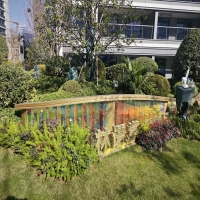Welcome to the website for landscape facilities products and knowledge.
How does the table perform in outdoor or semi-outdoor environments, if applicable?
Outdoor and semi-outdoor tables face unique environmental challenges that significantly impact their performance and longevity. The performance largely depends on material selection, with aluminum, teak, and synthetic wicker demonstrating superior weather resistance compared to untreated wood or metal surfaces. These materials withstand UV radiation, moisture exposure, and temperature fluctuations without significant degradation.
In semi-outdoor environments like covered patios or pergolas, tables benefit from partial protection while still experiencing environmental exposure. Performance considerations include surface stability during windy conditions, resistance to mold and mildew in humid climates, and color retention under direct sunlight. Modern outdoor tables often feature powder-coated finishes, drainage systems, and UV-protected surfaces to enhance durability.
Maintenance requirements vary significantly based on material composition. While aluminum tables may need occasional cleaning, teak requires regular oiling to maintain its appearance, and plastic composites typically demand minimal upkeep. Proper performance in outdoor settings also depends on adequate ventilation to prevent moisture accumulation and regular inspection of structural components.
The table's design significantly influences its outdoor performance. Tables with slatted surfaces allow water drainage, while sealed surfaces provide easier cleaning. Weight distribution affects stability in windy conditions, and material thickness determines resistance to warping or bending over time. Understanding these factors helps in selecting tables that maintain functionality and appearance through seasonal changes and weather exposures.
Related search:

Recommendation
Metal and acrylic color-changing combined curtain wall for large-scale public landscape facilities